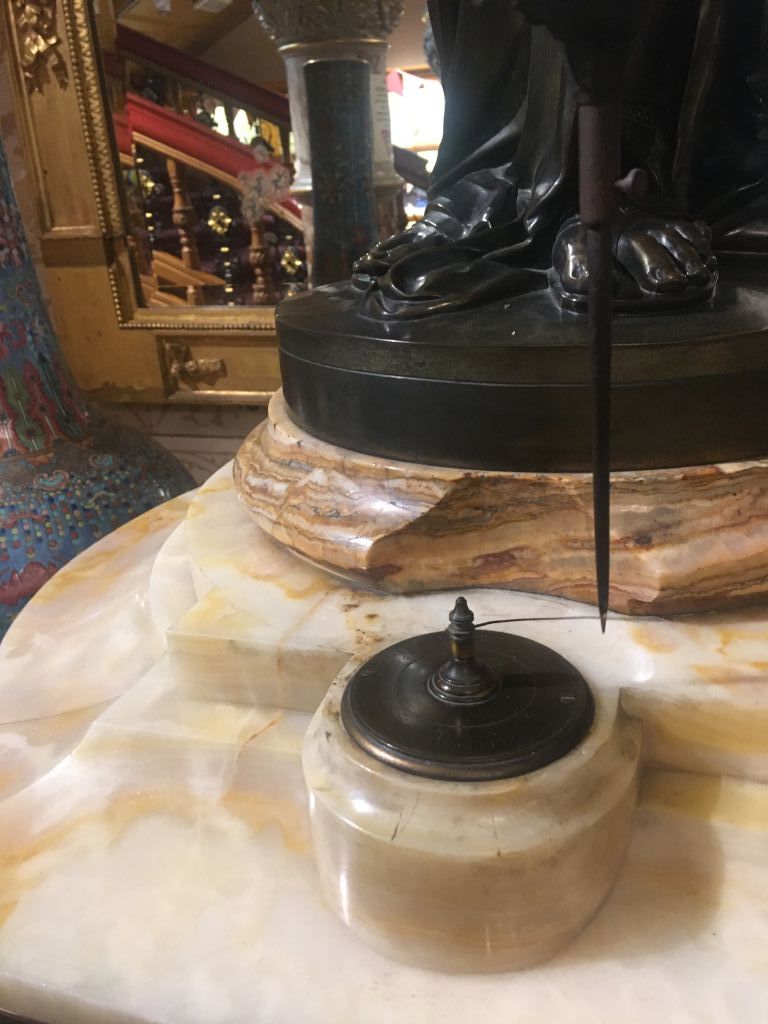Horolophile's videos are very interesting – several escapements built from Lego plus other clocks working.
This conical pendulum is deeper than it looks. Back in the late noughties there was a lot of speculation about coupled pendulums. Observing that anti-phase coupled pendulums were less sensitive to horizontal ground vibration, the idea was that quadrature ones might be insensitive to vertical vibrations. It turns out that while two pendulums will easily synchronise in anti-phase it's impossible to make them do so in quadrature. A clockmaker called Colin Fergusson suggested that an alternative would be to have a conical pendulum, which in effect oscillates in two orthogonal planes in quadrature. He did an experiment with a bob on a string suspended from the shaft of a DC motor and observed a very pronounced "resonance" at a certain speed. This seemed to contradict the accepted theory of conical pendulums (as "explained" in one of the references cited above) which has nothing to say about resonance. When I was at school we covered conical pendulums on A-level physics and were told that they were not resonant like an ordinary pendulum.
It turns out this is quite wrong! As Colin observed, experimentally they are resonant! If you do simulations of them, or construct the equations, this is confirmed. They have a rather similar response to an ordinary pendulum, except that their "circular deviation" of rate with amplitude is the opposite sign. Also since the rate depends more strongly on amplitude the shape of their response curve is distorted, falling off more rapidly on the high-frequency side.
So the explanation of the clock in the first photos is that the radial arm applied a constant torque to the pendulum which accelerates it towards its resonant frequency. As it reaches that its amplitude, and therefore velocity, increase so it absorbs much more energy. Once the air resistance torque equals the driving torque the amplitude stabilises – just like a conventional pendulum.
Sadly it turns out that the conical pendulum is not insensitive to vertical motions. I wrote an article on this for Horological Science News, happy to share with anyone interested.
Of course the pendulum doesn't have to have the same period in the two planes, if the suspension is gimballed. Solar/sidereal clocks have been made with a single pendulum vibrating at different rates in the two planes with separate escapements driving separate trains and faces.
Bond's clock uses a conical pendulum governor that runs slightly faster than the main pendulum to drive a very clever escapement which is essentially completely "detached". There's a very nice description of it in Philip Woodward's My Own Right Time.
 Michael Gilligan.
Michael Gilligan.









